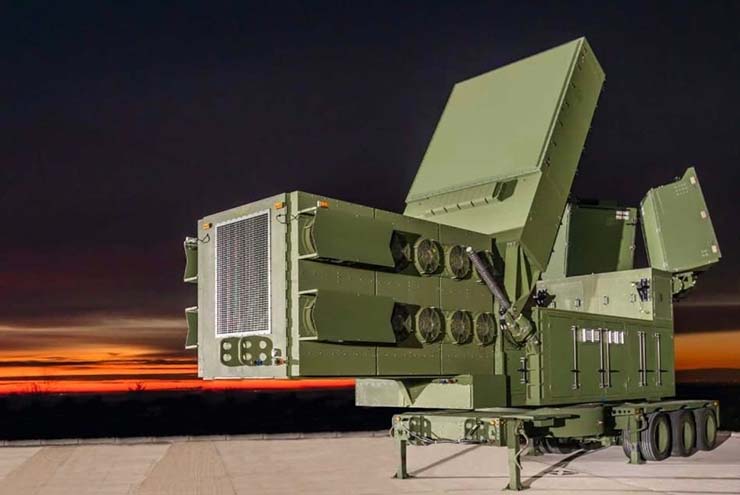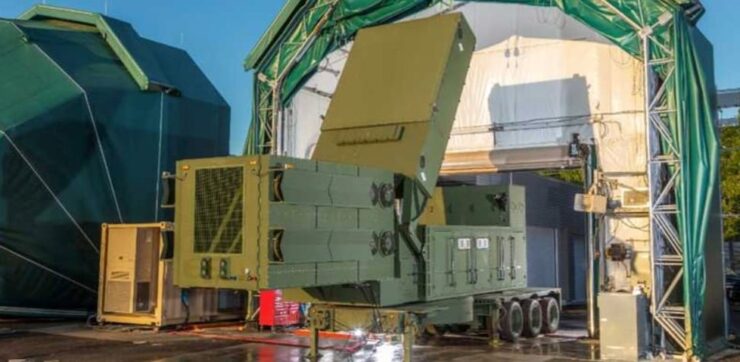
The US Army, in partnership with Raytheon Missiles & Defense (RMD), introduced its newest air defence radar, which promises to possess better capabilities to detect and defend against complex and evolving threats and reduce operator workload.
Tom Laliberty, President of Land Warfare & Air Defense at Raytheon Missiles & Defense, claims, “These threats are flying farther, faster, and with more accuracy, and adversaries are now coordinating attacks to use these threats simultaneously.”
The All Seeing: Lower Tier Air and Missile Defence Sensor
The USA and its allies being in an unpredictable international landscape, must prepare for an evolving set of airborne threats. With rapid progress made by the US Army and Raytheon Missiles & Defense, this demand is being met by the Lower Tier Air and Missile Defense Sensor (LTAMDS). A 360-degree, Active Electronically Scanned Array (AESA) radar, the LTAMDS is known to detect and track the entire range of threats, such as fixed-wing aircraft, cruise and ballistic missiles, and Unmanned Aircraft Systems (UAS).
RMD started a new suite of advanced radar technology called GhostEye, of which LTAMDS is the first member. It is to be part of the Army Integrated Air and Missile Defense. The Integrated Battle Command System (IBCS), which is its component, is a network that connects all the air and missile defence systems.
Laliberty stated that LTAMDS is a transformational radar and a giant leap in technology and capability, which detects stressful or proliferating threats. These advances can be witnessed on several levels. Firstly, the 360-degree capability of LTAMDS enables it to sense and detect threats from all directions. In addition, it has a strengthened radar signal and enhanced sensitivity, thanks to its powerful gallium nitride semiconductor technology. This semiconductor technology provides an extended range, improved resolution, and higher precision.
Laliberty says, “These features expand the battlespace, the ability to sense in all directions wherever the threat comes from, the ability to detect at longer distances and to detect threats travelling at higher velocities.”
Laliberty mentions, “This new generation of radars features software-defined apertures, meaning the systems can employ additional capabilities through software upgrades. This will significantly expedite the new capability to the warfighter [through] the equipment they’re already operating.”

Talk of the Town: High Demand for LTAMDS
According to Laliberty, in 2022, 6 radars will be delivered to the US Army for testing. The first system is already being tested at the White Sands Missile Range. While two more are currently being tested in New England at RMD’s open-air test site, the remaining three are completing integration testing at the company’s Massachusetts facility. Thanks to its investments in its facilities, the company can produce 12 to 18 radars a year.
Meanwhile, air defence systems operators worldwide are taking notice of these developments. Over 12 nations have expressed a keen interest in acquiring the radar. One among them is Poland, which recently signed a letter of request to the US government to make the LTAMDS part of its air defence architecture.
The war in Ukraine has made many countries around the world assess their capabilities, which range from technologies like the LTAMDS, which boosts sensor capacity and capability, to efforts to strengthen the interceptors’ magazine depth.
This kind of international expansion provides these capabilities to the US allies and boosts their commonality with the country, leading to solid working relationships and cost benefits. Raytheon Missiles & Defense foresees a future in which LTAMDS operators participate in a supportive partnership worldwide.
Visionary: Plans for LTAMDS and the GhostEye Suite
The main aim is to replace the current Patriot radar in the US Army’s air and missile defence architecture with the LTAMDS. However, the two can also be integrated with the current PAC-2 GEM-T and PAC-3 MSE interceptors. It can also support future interceptors, both directed energy and kinetic systems.
Laliberty also reveals that RMD has the International Engineering Services Program for Patriot, which shares the system upgrade costs across all participants. They also intend to implement a similar programme for LTAMDS, for which they are tirelessly working with the US Army. The LTAMDS is the first stage of the company’s ambitions in radar technology, represented by the GhostEye family. It has also developed a medium-range battlefield radar called GhostEye MR, with plans to expand the suite in the next few years.
GhostEye technology also provides advanced level automation compared to current radars, which in turn enhances the ability to emplace, maintain, and operate the systems. They also have a health prognostics capability that is AI-based, automating and also supporting system maintenance. Laliberty claims that these features translate to the system’s higher operational availability and lower demanding requirements, making it way more economical for customers.
– The writer is an Aerospace and Defence Analyst & Director ADD Engineering Components (India) Pvt Ltd (An Indo- German Company). The views expressed are of the author and do not necessarily reflect the views of Raksha Anirveda








